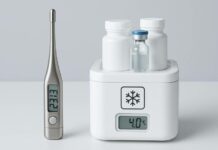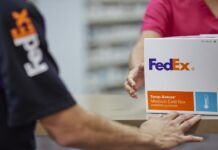The pharmaceutical company Boehringer Ingelheim has grown again in the current financial year. In the first half of 2012, currency-adjusted sales increased by 6.8% compared with the previous year to €7.1 billion. The increased sales were driven by the established respiratory tract medication SPIRIVA® and COMBIVENT®, both of which experienced double-digit growth, as well as by the newly introduced anticoagulant PRADAXA® and the new diabetes medication TRAJENTA®. The company achieved strong growth particularly in the USA and emerging markets. Boehringer Ingelheim is aiming for single-digit growth for the year as a whole. The company’s sales in 2011 amounted to €13.2 billion.
“The positive figures are snapshots in time and must not obscure our view of the changes taking place in our most important markets”, explained Prof. Andreas Barner, Chairman of the Board of Managing Directors, when presenting the figures for the first half of the year. “The economic headwind from the sovereign debt crisis in southern Europe and the continued weak economic growth in the USA make the business environment increasingly difficult for the pharmaceutical industry. That is something that we cannot influence, despite an attractive product range”, said Barner, outlining the business challenges that Boehringer Ingelheim will be faced with even after reviewing its internal processes and structures.
“In addition to the complicated budget situation in many countries, it is becoming increasingly difficult to access markets and establish new innovative treatments such as those that our company develops and offers”, explained the Chairman of the Board of Managing Directors. “Research-driven pharmaceutical companies such as Boehringer Ingelheim are particularly affected by this development. Moreover, the economic and financial crisis has left some countries wondering whether they can introduce new medications under their reduced healthcare and national budgets, even if these medications are clearly superior to standard treatments”. The company has already sensed this development with the launch of PRADAXA® and TRAJENTA®.
In the coming years, the family company will introduce further new developments from its own extensive research pipeline. “We will provide new medications, especially for treatment in the areas of diabetes, oncology, hepatitis C, idiopathic pulmonary fibrosis and other respiratory tract diseases”, stressed Barner, who is also responsible for Research & Development at Boehringer Ingelheim. A whole range of new biological and chemical active substances has already moved from pre-clinical to clinical development. Substances in the late development phases, such as afatinib for the treatment of lung cancer, are also moving ahead as planned.
Prescription-only drugs represent a large proportion of sales
Total sales of prescription-only drugs, which form Boehringer Ingelheim’s most important area of business, amounted to around €5.6 billion in the first half of 2012. That is 8.7 % up on the previous year. With half-year sales of €1.8 billion, SPIRIVA®, which is used to treat chronic obstructive pulmonary disease (COPD), remains the company’s best-selling drug. The MICARDIS® product family was able to maintain its high level of sales at €969 million. Boehringer Ingelheim achieved sales of around €500 million with the new oral anticoagulant PRADAXA® (dabigatran etexilate).
“For Boehringer Ingelheim, sales in the first half of the 2012 financial year were shaped by the market launch of PRADAXA® and the positive development of our established drugs”, explained Hubertus von Baumbach, member of the Board of Managing Directors responsible for Finance, regarding business development. The operating result developed as expected. “However, sustaining the positive business development in the first half of 2012 over the next six months will be challenging”.
Sales in the OTC sector amounted to €699 million. In local currencies, this represents a growth of 1.3% compared with the first six months of the previous year. The positive development in this segment has also been hindered by the euro and economic crisis in southern Europe and the still-difficult market environment for OTC drugs in Japan (-5.3% in local currencies).
The animal health sector achieved total sales of €527 million in the first half of 2012, which equates to currency-adjusted growth of 7.8%. The best-selling product was once again the swine vaccine Ingelvac® CircoFLEX, with a sales growth of 6.1% year-on-year. Growth in the animal health sector in the first few months of 2012 was attributed in particular to sales of animal vaccines in the emerging Asian markets.
Boehringer Ingelheim’s third-party business is supported to a large extent by the development and manufacture of biopharmaceuticals. Sales from biopharmaceuticals decreased from €233 million to €214 million in the first half of 2012, but by the end of the year are expected to be slightly higher than in the previous year.
Strong growth in the USA and emerging markets
With total sales of just under €3.3 billion in the first half of 2012 and growth of 9.5%, North and South America remain the most significant regions for Boehringer Ingelheim. In the Asia/Australia/Africa region, the pharmaceutical company was able to increase its revenues by 9.2% to over €1.7 billion due to strong sales of prescription-only drugs in the same period. The regions in the Middle East and North Africa as well as Latin America, with Brazil, Colombia and Venezuela on top, were the markets with the strongest growth in this area. This growth counteracted the weak performance in southern Europe in particular. Overall, Boehringer Ingelheim achieved total sales of around €2 billion in the Europe region.


















